Censorship Industrial Complex
Rise in arson coincides with residential school murders claim
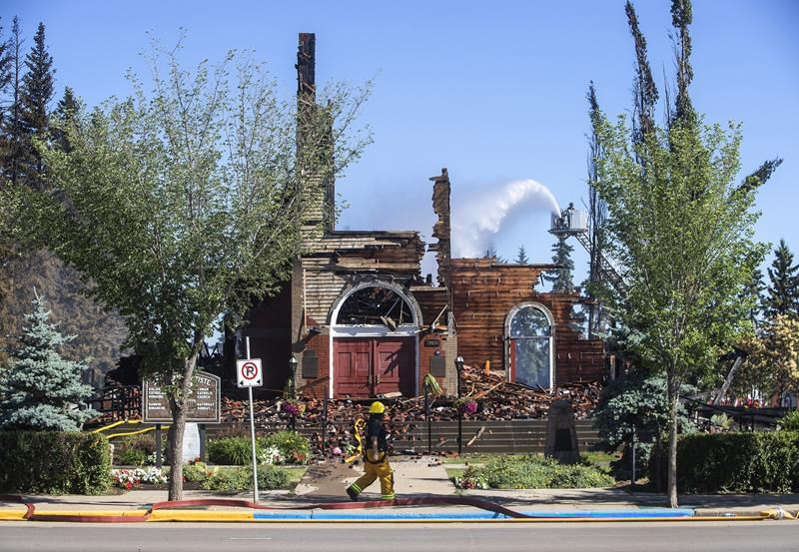
Morinville, Alberta’s 114 year old Jean Baptiste Catholic Church was destroyed by arson in June 2021
From the Frontier Centre for Public Policy
Staggering Number of Churches Burned, More Than Thought
Blacklocks reports that since 2010, when the Truth and Reconciliation (TRC) commissioners began making the claim in interviews and in interim reports that thousands of indigenous children had died at residential schools under suspicious circumstances, more than 400 Christian churches have burned in Canada.
Those allegations were false, and based on a conspiracy theory.
But, the church burnings increased significantly after the May 27, 2021 Kamloops announcement ramped up that claim to an actual accusation by the Tk’emlups Indian band that 215 children had died under sinister circumstances, and were buried by priests in secrecy on the school grounds — “with the forced help of children, as young as six”.
Where did that Tk’emlups story come from? Most importantly, why would anyone believe such obvious nonsense?
The conspiracy theory that launched the entire missing children claim was largely created out of whole cloth by a defrocked United Church minister, named Kevin Annett.
For reasons that defy rational explanation this unusual man made it his life’s work to take the alcoholic ramblings of a few Vancouver east side street residents, polish them up, and present them as fact to the world.
For example, he repeated the story that Queen Elizabeth had kidnapped ten children from the Kamloops school, and those children were never seen again. He also repeated stories about priests clubbing students to death and throwing them into graves dug by other students, dead boys hanging on meathooks in barns, and babies thrown into furnaces by priests and nuns. Respected investigative reporter Terry Glavin, exposed Annett as a crank, and debunked Annett’s wild stories in detail in a 2008 Tyee article. Annett’s stories are so obviously fake that it seems incredible that anyone believed them.
But they did. In fact some of the people who fell for these stories occupied important positions. One was Gary Merasty, a Member of Parliament. Merasty became so convinced that these claims, as presented in Kevin Annett’s most famous documentary, “Unrepentant” were true, that he was able to convince the Assembly of First Nations (AFN) and other important politicians that the newly appointed TRC commissioners must look into Annett’s claims.
The newly appointed TRC commissioners unwisely accepted this new area of study, despite that fact that they had no mandate to do so. When the federal government refused their request for a mandate and funds to search for these phantom “missing children” they ignored the rebuff, and pursued the subject anyway.
It appears from their statements on the subject that they completely bought into the Annett conspiracy theory. Commissioner Murray Sinclair gave many interviews about these supposedly “missing children” and hinted frequently that dark forces were at play.
He even alleged — on absolutely no evidence — that so many deaths occurred at residential schools that the federal government conspired to keep the information from the Canadian public after 1920. Then he upped his death number — again with no evidence to support his claim — to over 6,000. All of this alarming rhetoric was heard across Canada, but particularly within increasingly outraged indigenous communities.
Following the Kamloops announcement he took this rhetoric up to alarming new heights — suggesting that “15-25,000, maybe more” deaths, some deliberate — took place at the schools.
For her part, Commissioner Marie Wilson actively promoted the myth that thousands of children came to the schools, and were never seen again. According to Wilson these children simply disappeared. (She did not explain why there was not even one complaint from a parent that their child had gone missing or discuss cause of death.)
The mainstream media, meanwhile, did not question any of these always improbable claims. Quite the contrary, they not only played along with these baseless claims, but actively encouraged them. It did not seem to occur to them that they were actively supporting a conspiracy theory.
So, it should really come as no surprise that on May 27, 2021 when Chief Casimir made her false claim — that the “remains of 215 former students of KIRS” had been found — there was absolutely no pushback or questioning of what should have seemed to Canadians like a bizarre claim. Instead, the media – including the once prestigious New York Times — actively amped up the rhetoric, and added their own claims about “mass graves found.”
Trudeau and his ministers — especially Marc Miller — made matters immeasurably worse by immediately ordering all federal flags to be flown at half mast, and promising enormous amounts of money to any other indigenous community that wanted to make a similar claim.
The truth is that the TRC’s missing children wild goose chase had thoroughly captivated journalists, and entire indigenous communities, to the extent that the baseless Tk’emlups claim seemed to make sense to them. Justin Trudeau and his ministers were in that gaggle of gullibles. Canada became the laughing stock of the world for dumbly accepting these wild claims.
All along, there have been a few brave souls who have tried to question a residential school narrative that was increasingly getting out of control.
Remember Senator Lynn Beyak? She was forced out of the senate essentially for telling the truth — namely that many children benefitted from their residential school educations, and that the TRC should have said so. She acknowledged that many children were hurt by their experiences there, but insisted that both the good and the bad should have been told. For that bit of common sense she was relentlessly attacked by a partisan media, expelled from the Conservative caucus, and forced into retirement.
Most recently, a retired professor emeritus, Rod Clifton, who spoke about his positive experiences working at a northern residential school, and explained why the claims that residential school students were murdered and secretly buried could not possibly be true, had his True North interview removed by a social media company on the grounds that it was “hate speech”.
Never mind that he was recounting his personal experience at the school. Never mind that his wife and son are indigenous. The professor dared to speak against an orthodoxy that tolerates no dissent.
Meanwhile, the mainstream media reporting about residential schools has become increasingly extreme. Fabulists, like Kevin Annett and other opportunists, have built careers for themselves writing exaggerated, or even completely made up stories about residential school “horrors” and “atrocities.” Instead of being accurately portrayed as the flawed attempts at indigenous education that they were, they are now presented as virtual charnel houses, where children were tortured and murdered.
As stated, all of this heated rhetoric went into overdrive on May 27, 2021, when Chief Rosanne Casimir falsely claimed that “the remains of 215 children” had been found on the grounds of the former Kamloops Indian Residential School (KIRS). In fact, no such remains had been found. The only “evidence” for her claim were stories the people in the community had told themselves, and radar blips (soil anomalies) that an inexperienced radar operator had misinterpreted as possible graves.
There was absolutely no reason why Casimir’s claim should have been taken seriously in 2021. Historical records clearly show that the children who died of disease or accident while attending residential school were all given Christian burials, with their deaths properly recorded. Most were buried by their families in their home communities. In short, there is no historical evidence that even one residential school student died under sinister circumstances, or was buried in secrecy.
But instead of refuting Casimir’s claim, or asking even the most basic questions, the Trudeau government and its CBC ally simply accepted the claim as true.
And since that time, both the Trudeau government and CBC have doubled down on their refusal to correct the misinformation that they have promoted.
In fact, the Senate is now considering ways to make people like Senator Lynn Beyak and Professor Clifton criminals. They want to criminalize any “residential school denier” who dares to doubt the truth of anything that a residential school “survivor” has alleged.
This would include, for example, anyone who dared to disagree with the two Tk’emlups people who claim that they were the “children as young as six” who in the 1960s were forced to dig graves for priests who had somehow killed their comrades, and were now burying them in secrecy.
Those two people are still alive. Have they been interviewed by the RCMP? We do not know.
Why are their identities not being revealed by Casimir and her associates? Again, we do not know. Why has CBC, or others not interviewed these two people about their sensational claim? Again, we are offered no explanation by CBC.
This would also mean that anyone disagreeing with any of the claims of “survivors” such as Billie Coombes, or any of Kevin Annett’s wild stories could face criminal prosecution.
And why did Chief Casimir claim that the “remains of 215 children” had been found, when that was clearly a false claim. Only soil anomalies, which are almost certainly from a 1924 sewage trench were found. Why did it take three years for the T’Kumlups band to confess that no human remains were found?.
Instead, we are left in limbo on the most sensational crime story in Canadian history. 215 — then thousands — of indigenous children were somehow killed and secretly buried at residential schools all across the country? (Former National Chief RoseAnne Archibald says “tens of thousands”, former TRC Commissioner Murray Sinclair says “15-25,000, maybe more.”) Rather than trying to investigate this story by vigorously questioning people making these sensational claims the RCMP sit on their hands in their offices, CBC steadfastly refuses to ask any questions. And our own government threatens to make criminals of any retired professors or others who dare to ask questions about it.
Meanwhile, the Tk’emlups band received (and apparently spent) $8,000,000 from the federal government for making a false claim.
The TRC accused Canadian priests, nuns, teachers and staff at residential schools of somehow being responsible for the disappearance of thousands of indigenous children who attended the schools. That is a shocking accusation. But it is even more shocking that the accusation was made with no real evidence to support it. Chief Rosannne Casimir went even further. She accused those people —who are no longer here to defend themselves — of murder and secret burial. Now, the federal government wants to stop Canadians from even talking about these sensational and baseless claims.
The next logical step for them is to stop Canadians from even knowing about it. That’s exactly what they are doing in every school in the country — misinforming every Canadian school child by telling them that the Kamloops claim is true.
And that is probably what Ottawa has in mind, with the new “digital safety officer” contemplated in Trudeau’s truly frightening Online Harms Act. Truth-telling senators and professors will be silenced. Then the truth will be what lies in unmarked graves.
The church burnings are only the outward manifestation of this larger evil. Canadians are being deliberately deceived by their own government, the indigenous leadership, and our own media. The Trudeau Liberals have actively pursued a policy that has both encouraged, and then kept alive a conspiracy theory — namely, that residential school priests, nuns and teachers were responsible for the deaths and secret burials of the children placed in their care. The indigenous leadership has exploited an obviously false claim — pocketing a mountain of tax dollars, while our moribund mainstream media sits in silence.
Lewis Carroll wrote about an upside down world in Alice in Wonderland. He would immediately understand what is happening in Canada today.
We have a sitting government actively promoting a conspiracy theory, while threatening to criminalize anyone who tries to expose it. We have an RCMP that refuses to do its job, and conduct an investigation that would quickly tell Canadians that there are no secretly buried children at Kamloops. We have CBC and most of the mainstream media asking no questions about the biggest news story in Canadian history. And we have countless grifter writers and academics who are building their careers repeating ghost stories, and pretending that they are telling the truth.
And the Tk’emlups band gets $8,000,000 for lying, while a professor and senator get cancelled for telling the truth.
As Jon Kay notes in his recent Quillette essay, an officially sanctioned lie — and that is exactly what the Kamloops claim has become — cannot endure forever.
At some point Canada must come to its senses.
First published in the Western Standard here.
Brian Giesbrecht, retired judge, is a Senior Fellow at the Frontier Centre for Public Policy.
Censorship Industrial Complex
UK Government “Resist” Program Monitors Citizens’ Online Posts
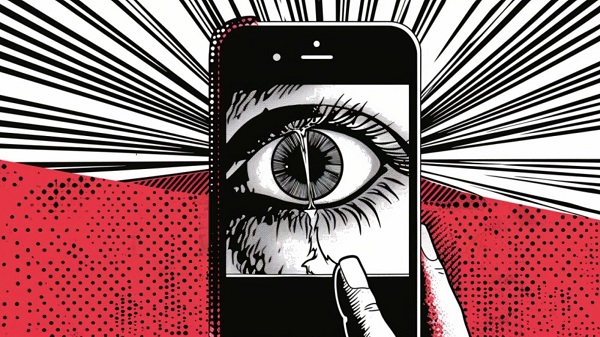
Alberta
Alberta bill would protect freedom of expression for doctors, nurses, other professionals
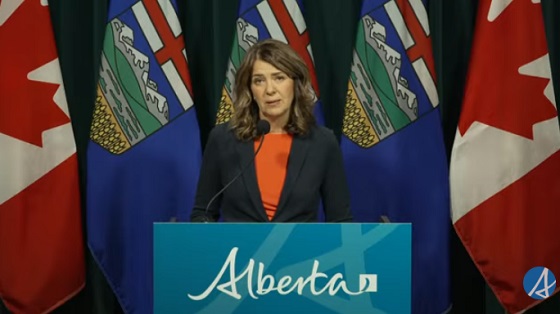
From LifeSiteNews
‘Peterson’s law,’ named for Canadian psychologist Jordan Peterson, was introduced by Alberta Premier Danielle Smith.
Alberta’s Conservative government introduced a new law that will set “clear expectations” for professional regulatory bodies to respect freedom of speech on social media and online for doctors, nurses, engineers, and other professionals.
The new law, named “Peterson’s law” after Canadian psychologist Jordan Peterson, who was canceled by his regulatory body, was introduced Thursday by Alberta Premier Danielle Smith.
“Professionals should never fear losing their license or career because of a social media post, an interview, or a personal opinion expressed on their own time,” Smith said in a press release sent to media and LifeSiteNews.
“Alberta’s government is restoring fairness and neutrality so regulators focus on competence and ethics, not policing beliefs. Every Albertan has the right to speak freely without ideological enforcement or intimidation, and this legislation makes that protection real.”
The law, known as Bill 13, the Regulated Professions Neutrality Act, will “set clear expectations for professional regulatory bodies to ensure professionals’ right to free expression is protected.”
According to the government, the new law will “Limit professional regulatory bodies from disciplining professionals for expressive off-duty conduct, except in specific circumstances such as threats of physical violence or a criminal conviction.”
It will also restrict mandatory training “unrelated to competence or ethics, such as diversity, equity, and inclusion training.”
Bill 13, once it becomes law, which is all but guaranteed as Smith’s United Conservative Party (UCP) holds a majority, will also “create principles of neutrality that prohibit professional regulatory bodies from assigning value, blame or different treatment to individuals based on personally held views or political beliefs.”
As reported by LifeSiteNews, Peterson has been embattled with the College of Psychologists of Ontario (CPO) after it mandated he undergo social media “training” to keep his license following posts he made on X, formerly Twitter, criticizing Trudeau and LGBT activists.
He recently noted how the CPO offered him a deal to “be bought,” in which the legal fees owed to them after losing his court challenge could be waived but only if he agreed to quit his job as a psychologist.
Early this year, LifeSiteNews reported that the CPO had selected Peterson’s “re-education coach” for having publicly opposed the LGBT agenda.
The Alberta government directly referenced Peterson’s (who is from Alberta originally) plight with the CPO, noting “the disciplinary proceedings against Dr. Jordan Peterson by the College of Psychologists of Ontario, demonstrate how regulatory bodies can extend their reach into personal expression rather than professional competence.”
“Similar cases involving nurses, engineers and other professionals revealed a growing pattern: individuals facing investigations, penalties or compulsory ideological training for off-duty expressive conduct. These incidents became a catalyst, confirming the need for clear legislative boundaries that protect free expression while preserving professional standards.”
Alberta Minister of Justice and Attorney General Mickey Amery said regarding Bill 13 that the new law makes that protection of professionals “real and holds professional regulatory bodies to a clear standard.”
Last year, Peterson formally announced his departure from Canada in favor of moving to the United States, saying his birth nation has become a “totalitarian hell hole.”
-

 Alberta7 hours ago
Alberta7 hours agoFrom Underdog to Top Broodmare
-

 International1 day ago
International1 day agoAfghan Ex–CIA Partner Accused in D.C. National Guard Ambush
-
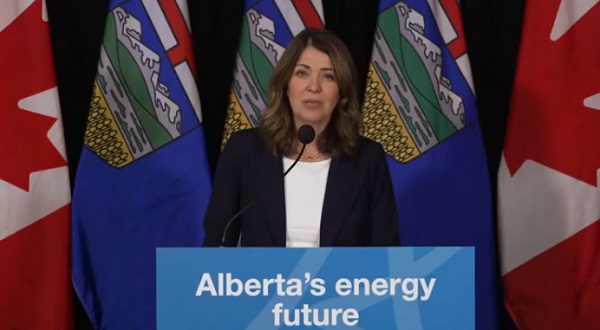
 Alberta1 day ago
Alberta1 day agoAlberta and Ottawa ink landmark energy agreement
-

 Artificial Intelligence2 days ago
Artificial Intelligence2 days agoTrump’s New AI Focused ‘Manhattan Project’ Adds Pressure To Grid
-

 Energy1 day ago
Energy1 day agoPoilievre says West Coast Pipeline MOU is no guarantee
-
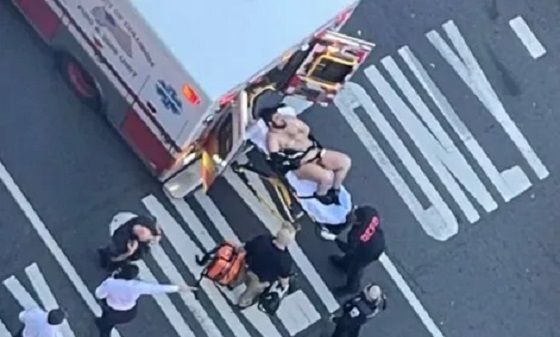
 International2 days ago
International2 days agoTrump orders 500 more troops to reinforce D.C. after Guard shooting
-

 armed forces2 days ago
armed forces2 days agoCarney’s ‘Shared Sacrifice’ Is a Lie. Only Veterans Are Bleeding for This Budget
-
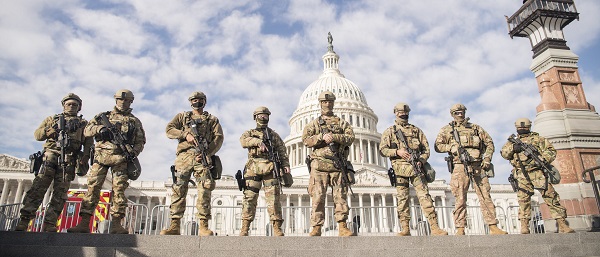
 International2 days ago
International2 days agoTrump Admin Pulls Plug On Afghan Immigration Following National Guard Shooting









